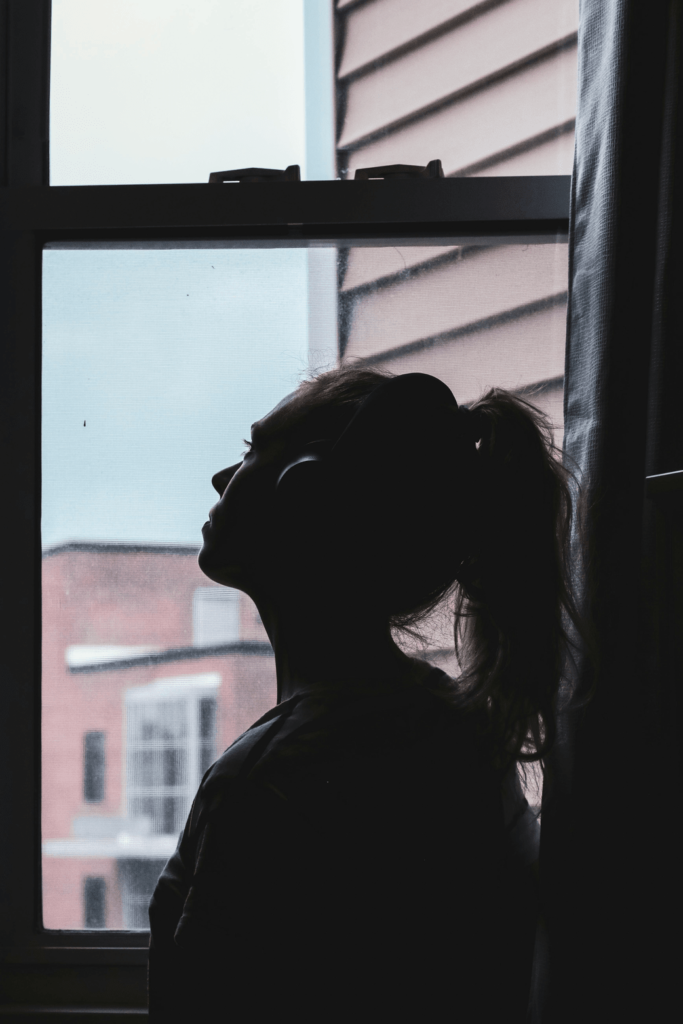Last updated on December 18th, 2024 at 03:15 am
- 1. Understanding Fear: A Fundamental Survival Mechanism
- 1.1 The Biological Basis of Fear
- 1.2 Common Fears and Their Origins
- 1.3 The Role of Learning in Fear Development
- 2. Phobias: When Fear Becomes Excessive
- 2.1 Defining Characteristics of Phobias
- 2.2 Types of Phobias
- 2.3 The Impact of Phobias on Daily Life
- 3. Comparing Fear and Phobia: Key Differences
- 3.1 Intensity and Duration
- 3.2 Rationality and Control
- 3.3 Impact on Functioning
- 3.4 Physiological Responses
- 4. The Psychology Behind Fear and Phobia Development
- 4.1 Cognitive Factors
- 4.2 Learning and Conditioning
- 4.3 Genetic and Neurobiological Factors
- 5. Treatment Approaches for Fears and Phobias
- 5.1 Cognitive-Behavioral Therapy (CBT)
- 5.2 Medication
- 5.3 Alternative and Complementary Approaches
- 6. Living with Fears and Phobias: Coping Strategies
- 6.1 Education and Self-awareness
- 6.2 Relaxation Techniques
- 6.3 Gradual Exposure and Desensitization
- 6.4 Building a Support Network
- 7. The Future of Fear and Phobia Research
- 7.1 Neuroimaging Advancements
- 7.2 Virtual Reality in Treatment
- 7.3 Genetic Research and Personalized Medicine
- The Biological Underpinnings of Fear Mechanisms
- Conditioning and Fear Response
- Experiential vs Nonexperiential Phobias
- Types of Phobias and Their Origins
- Physical Symptoms and Behavioral Responses
- The Role of Exposure Therapy in Treatment
- Impact of Phobias on Everyday Life
- Mental Health and Phobia Management
- Brain Function and Anxiety Disorders
- Childhood Fears and Development of Phobias
- Support Networks and Coping Strategies
- Genetic Factors and Conditionability
- Differences in Diagnosis and Treatment
- Fear vs Phobia in Real Life Scenarios
- Real Life Challenges and Phobia Management
- Complex Phobias and Social Isolation
- Specific Phobias and their Prevalence
- Mental Health Resources and Professional Support
- Brain Function and Fear Neurons
- Comorbidity with Other Mental Disorders
- Emotional and Behavioral Responses
- Conclusion
- Frequently Asked Questions
- What Are The Key Differences Between Fear And Phobia?
- How Do Symptoms Of Fear And Phobia Differ In Intensity?
- Why Is Exposure Therapy Effective In Treating Phobias But Not Common Fears?
- What Role Does Brain Activity Play In Fear Versus Phobia?
- How Can Social Phobia Impact Everyday Life Compared To General Fear?
- What Are The Types Of Phobia And How Do They Differ From Normal Fears?
- How Do Traumatic Experiences Contribute To The Development Of Phobias?
- Why Do Some People Develop Phobias While Others Only Experience Fears?
- How Do Social Anxiety Disorder And Social Phobia Differ From Common Social Fears?
- What Is The Role Of Avoidance In Maintaining Phobias Compared To Normal Fears?
- How Do Mental Health Professionals Diagnose Phobias Compared To Regular Fears?
Fear and phobias are often used interchangeably in everyday conversation, but they represent distinct psychological phenomena with significant differences in intensity, duration, and impact on daily life. While fear is a natural and adaptive response to perceived threats, phobias are intense, irrational fears that can severely disrupt an individual’s functioning.
Understanding the nuances between these two concepts is crucial for recognizing when normal fears cross the threshold into phobic territory and for developing appropriate coping strategies.
Let’s explore “Fears Vs Phobias” with this guide. Dive into the science of fear, phobia symptoms, and practical steps to manage and overcome these challenges.
1. Understanding Fear: A Fundamental Survival Mechanism
Fear is an innate emotional response that has played a crucial role in human survival throughout evolution. It serves as a protective mechanism, alerting us to potential dangers and preparing our bodies to react swiftly.
1.1 The Biological Basis of Fear
When we encounter a perceived threat, our body’s fight-or-flight response is activated. This intricate physiological process involves:
- The release of stress hormones like adrenaline and cortisol
- Increased heart rate and blood pressure
- Heightened sensory perception
- Redirection of blood flow to essential organs and muscles
These changes prepare us to either confront the threat or flee to safety, demonstrating fear’s adaptive value.
1.2 Common Fears and Their Origins
Many common fears have roots in our evolutionary past:
- Fear of heights: Protecting us from dangerous falls
- Fear of spiders and snakes: Avoiding potentially venomous creatures
- Fear of the dark: Heightening vigilance when visibility is low
- Fear of loud noises: Alerting us to potential danger
While these fears may seem less relevant in modern society, they persist as remnants of our ancestral survival instincts.
1.3 The Role of Learning in Fear Development
Not all fears are innate; many are learned through direct experience, observation, or cultural transmission. For instance, a child may develop a fear of dogs after being bitten, or an adult might fear flying after hearing about a plane crash. Understanding the origins of our fears can be a crucial step in managing them effectively.
2. Phobias: When Fear Becomes Excessive
While fear is a normal and often beneficial response, phobias represent an extreme and often debilitating form of fear. Phobias are characterized by an intense, irrational fear of specific objects, situations, or activities that pose little or no actual danger.
2.1 Defining Characteristics of Phobias
Phobias differ from normal fears in several key ways:
- Intensity: The fear response is disproportionate to the actual threat
- Persistence: The fear persists over an extended period, typically six months or more
- Avoidance: Individuals go to great lengths to avoid the feared object or situation
- Impairment: The phobia significantly interferes with daily life and functioning
- Recognition: The individual often acknowledges that their fear is excessive or unreasonable
These characteristics distinguish phobias as a clinical condition requiring professional attention.


2.2 Types of Phobias
Phobias are generally categorized into three main types:
- Specific phobias: Fears of particular objects or situations (e.g., arachnophobia – fear of spiders)
- Social phobia: Fear of social situations and interactions
- Agoraphobia: Fear of open or crowded spaces, often accompanied by panic attacks
Each type of phobia presents unique challenges and requires tailored treatment approaches.
2.3 The Impact of Phobias on Daily Life
Unlike normal fears, phobias can have a profound impact on an individual’s quality of life. They may lead to:
- Social isolation
- Career limitations
- Restricted travel or mobility
- Chronic stress and anxiety
- Lowered self-esteem
The pervasive nature of phobias often necessitates professional intervention to restore normal functioning.
3. Comparing Fear and Phobia: Key Differences
While fear and phobias share some commonalities, several crucial factors distinguish them:
3.1 Intensity and Duration
Fears are typically proportionate to the perceived threat and subside once the danger has passed. Phobias, on the other hand, involve an exaggerated fear response that persists even in the absence of immediate danger. This prolonged state of anxiety is a hallmark of phobic disorders.
3.2 Rationality and Control
Normal fears are often based on realistic assessments of potential risks. Individuals can usually rationalize their fears and maintain some level of control over their responses. Phobias, however, involve irrational fears that the individual struggles to control, even when they recognize the fear as excessive.
3.3 Impact on Functioning
While fears may cause temporary discomfort or caution, they generally do not significantly impair daily functioning. Phobias, in contrast, can severely restrict an individual’s activities, relationships, and overall quality of life. The avoidance behaviors associated with phobias often lead to missed opportunities and limited experiences.
3.4 Physiological Responses
Both fears and phobias trigger the body’s fight-or-flight response. However, the physiological reactions in phobias tend to be more intense and may include symptoms such as:
- Rapid heartbeat and breathing
- Sweating and trembling
- Nausea or dizziness
- Chest pain or tightness
- Feeling of unreality or detachment
These severe physical symptoms can further reinforce the avoidance behaviors characteristic of phobias.


4. The Psychology Behind Fear and Phobia Development
Understanding the psychological mechanisms underlying fear and phobia formation is crucial for developing effective treatment strategies.
4.1 Cognitive Factors
Cognitive processes play a significant role in both fear and phobia development. These include:
- Attention bias: Heightened focus on potential threats
- Catastrophic thinking: Overestimating the likelihood or severity of negative outcomes
- Negative self-talk: Internal dialogue that reinforces fearful beliefs
- Memory bias: Selective recall of fear-related experiences
In phobias, these cognitive distortions are often more pronounced and resistant to change.
4.2 Learning and Conditioning
Both fears and phobias can be acquired through various learning processes:
- Classical conditioning: Associating a neutral stimulus with a fear-inducing experience
- Operant conditioning: Reinforcement of avoidance behaviors through relief from anxiety
- Observational learning: Acquiring fears by witnessing others’ fearful responses
- Informational learning: Developing fears based on received information or warnings
While these processes contribute to normal fear acquisition, they can become pathological in the case of phobias.
4.3 Genetic and Neurobiological Factors
Research suggests that both genetic predisposition and neurobiological differences may contribute to the development of phobias. Factors such as:
- Heightened amygdala reactivity
- Imbalances in neurotransmitter systems
- Inherited anxiety sensitivity
These biological components may explain why some individuals are more susceptible to developing phobias than others.
5. Treatment Approaches for Fears and Phobias
While normal fears often resolve on their own or with minimal intervention, phobias typically require more structured treatment approaches.
5.1 Cognitive-Behavioral Therapy (CBT)
CBT is a widely used and effective treatment for both fears and phobias. It involves:
- Identifying and challenging irrational thoughts
- Gradual exposure to feared stimuli (exposure therapy)
- Learning coping strategies and relaxation techniques
- Developing new, more adaptive thought patterns
CBT helps individuals confront their fears in a controlled, supportive environment, leading to lasting change.
5.2 Medication
In some cases, medication may be prescribed to manage symptoms associated with phobias:
- Anti-anxiety medications for short-term relief
- Antidepressants for long-term management of anxiety symptoms
- Beta-blockers to control physical symptoms of anxiety
Medication is often used in conjunction with psychotherapy for optimal results.


5.3 Alternative and Complementary Approaches
Various alternative treatments may be helpful in managing fears and phobias:
- Mindfulness and meditation
- Hypnotherapy
- Acupuncture
- Herbal remedies
While these approaches may provide relief for some individuals, their efficacy varies, and they should be used in consultation with a healthcare professional.
6. Living with Fears and Phobias: Coping Strategies
Developing effective coping mechanisms is crucial for managing both normal fears and phobias in daily life.
6.1 Education and Self-awareness
Understanding the nature of fear and phobias can be empowering. Learning about the physiological and psychological processes involved can help individuals:
- Recognize their fear responses
- Differentiate between rational and irrational fears
- Identify triggers and patterns in their anxiety
This knowledge forms the foundation for effective self-management.
6.2 Relaxation Techniques
Practicing relaxation methods can help manage the physical symptoms of fear and anxiety:
- Deep breathing exercises
- Progressive muscle relaxation
- Guided imagery
- Mindfulness meditation
Regular practice of these techniques can increase overall resilience to stress and anxiety.
6.3 Gradual Exposure and Desensitization
Controlled exposure to feared situations or objects can be beneficial:
- Start with less threatening scenarios and gradually increase intensity
- Use visualization techniques before real-life exposure
- Practice coping skills during exposure exercises
- Celebrate small victories and progress
This approach helps build confidence and reduces the power of phobic fears over time.


6.4 Building a Support Network
Having a strong support system is invaluable when dealing with fears and phobias:
- Share experiences with trusted friends and family
- Join support groups or online communities
- Seek professional help when needed
- Educate loved ones about the nature of phobias
A supportive environment can provide encouragement, understanding, and practical assistance in managing fears.
7. The Future of Fear and Phobia Research
Ongoing scientific investigations continue to deepen our understanding of fear and phobias, paving the way for more effective treatments and prevention strategies.
7.1 Neuroimaging Advancements
Advanced brain imaging techniques are providing unprecedented insights into the neural mechanisms of fear and phobias. These studies may lead to:
- More precise diagnostic tools
- Targeted interventions based on individual brain patterns
- Better understanding of the long-term effects of phobias on brain structure and function
Such advancements hold promise for personalized treatment approaches in the future.
7.2 Virtual Reality in Treatment
Virtual reality (VR) technology is emerging as a powerful tool in phobia treatment:
- Allows for controlled, realistic exposure scenarios
- Provides a safe environment for practicing coping skills
- Enables gradual, customizable exposure intensity
- Increases accessibility to treatment for those with severe phobias
As VR technology continues to advance, it may become a standard component of phobia treatment protocols.
7.3 Genetic Research and Personalized Medicine
Ongoing genetic studies aim to identify specific genes associated with anxiety disorders and phobias. This research may lead to:
- Early identification of individuals at risk for developing phobias
- Tailored prevention strategies based on genetic profiles
- More effective, genetically-informed treatment approaches
The integration of genetic information into clinical practice could revolutionize the management of phobic disorders.


The Biological Underpinnings of Fear Mechanisms
Fear responses are complex and involve different brain regions, including the amygdala. The central amygdala and the basolateral amygdala complex play crucial roles in triggering fear mechanisms.
These areas work in tandem to generate aversive event responses, effectively preparing the body for a dangerous situation. Understanding these brain-level processes is vital for distinguishing between adaptive fears and excessive fear that may lead to psychiatric disorders.
Conditioning and Fear Response
Fear is often shaped by conditioning processes. Classical fear conditioning involves associating neutral stimuli with threatening events, leading to a conditionability in phobia.
Auditory fear conditioning is one example where a sound triggers a conditioned fear response. This has been linked to exaggerated fear conditionability in individuals with extreme anxiety.
In fear vs phobia comparison, the impact of conditioning of fear helps explain why certain fears become debilitating situational phobias. This contrasts with fears that remain manageable reactions in day-to-day life.
Experiential vs Nonexperiential Phobias
Experiential phobia arises from direct exposure to traumatic events, such as a dog attack leading to a fear of animals. On the other hand, Nonexperiential phobia develops without direct negative experiences.
Experiential-specific phobia includes fear of snakes in individuals who have encountered one under real danger. Meanwhile, Nonexperiential phobia might manifest without any previous actual danger.
This differentiation is crucial for understanding treatment pathways. It helps mental health professionals in designing targeted therapies to address the source of the fear.
Types of Phobias and Their Origins
Phobias are categorized as Simple phobias and Complex phobias. Simple phobias include animal phobias like fear of snakes and fear of blood, which are often linked to bad experiences or evolutionary instincts.
Complex phobias such as Social phobia and agoraphobia are related to broader contexts involving day life and interactions. These phobias are often fueled by overwhelming anxiety and social anxiety disorder, severely affecting everyday activities.
Physical Symptoms and Behavioral Responses
The physiological responses to phobias are intense. People with phobias often experience faster heartbeat, dry mouth, and overwhelming fear when faced with a phobic trigger.
These physical sensations serve as indicators that differentiate a strong fear from a normal life reaction. In fear vs phobia psychological response, phobias lead to an exaggerated anxiety response that goes beyond a natural response to threats.
The Role of Exposure Therapy in Treatment
Exposure therapy is a widely adopted type of therapy for addressing both common phobias and situational phobias. This exposure-based therapy involves a gradual confrontation with the feared object or situation.
For instance, individuals with a fear of animals may gradually engage in situations involving pets under a controlled environment. This approach eventually reduces their persistent fear over time.
Mental health professionals such as therapists at Pathways Counseling Services utilize exposure therapy to help patients reframe their responses. This therapy helps achieve improved outcomes by addressing the root cause of phobic reactions.


Impact of Phobias on Everyday Life
The influence of phobias extends far beyond the immediate moments of fear. Individuals dealing with extreme fear often experience limitations in everyday life, with certain types of phobia significantly impacting daily activities.
Social phobia, as a type of anxiety disorder, restricts one’s ability to engage in day life social interactions. This leads to worsening symptoms like feelings of fear and extreme anxiety, which require intervention for restoring normal life activities.
Mental Health and Phobia Management
Addressing phobias effectively involves both therapeutic and supportive approaches. For mental health care, it is essential to consult a healthcare provider to diagnose and create a personalized treatment plan.
The American Psychiatric Association and resources like Harvard Health Publishing provide valuable guidance on managing mental health conditions. This includes phobias and post-traumatic stress disorder.
Understanding fear vs phobia triggers is critical in tailoring effective interventions. This emphasizes the need for fear vs phobia therapy that accommodates individual triggers and fear vs phobia characteristics.
Brain Function and Anxiety Disorders
There is growing evidence that brain activity and brain chemistry play a role in the formation and persistence of phobias. Studies published in Clin Neurosci indicate that brain function anomalies, particularly in the amygdala, contribute to overwhelming anxiety and unreasonable fear.
This insight into the fear vs phobia physiological response helps mental health professionals determine appropriate treatment measures. It includes using medications like beta-blockers to manage physical sensations associated with phobias.
Childhood Fears and Development of Phobias
Childhood fears are a natural part of growth, but they can sometimes develop into more persistent fears. Traumatic experiences during childhood, such as an aversive event involving medical emergencies, can lead to blood-injection-injury phobia later in life.
It is crucial to differentiate between childhood fears that dissipate naturally and those that evolve into complex phobias. This distinction aids in the early application of fear vs phobia intervention methods, helping to prevent long-term complications.
Support Networks and Coping Strategies
Social support is an essential element of effective fear vs phobia management. Building a support system involving friends, family, and mental health professionals can significantly reduce feelings of anxiety.
Online communities and resources like the Depression Association of America offer peer support and coping strategies for people dealing with common phobias. Such support plays a key role in mitigating the difference between fear and pathological mental disorders by providing emotional backing during recovery.
Genetic Factors and Conditionability
The fear vs phobia causes can often be traced to genetic predispositions. Research from Nat Neurosci points to inherited traits influencing the conditionability in phobia.
This includes a heightened fear of situations such as Closed-in places, which could be linked to familial tendencies for developing extreme fear or mental health conditions. Understanding these genetic links helps explain the heightened fear vs phobia risk factors in certain populations.
Differences in Diagnosis and Treatment
The difference between fear and phobia is crucial when it comes to diagnosis and treatment. A healthcare provider can determine if a strong fear has evolved into a type of anxiety disorder that requires specialized care.
The fear vs phobia diagnosis process may involve psychological assessments and interviews to understand the nature of the persistent fear. Mental health professionals use this distinction to select appropriate treatment modalities, such as exposure therapy and cognitive behavioral interventions.
Fear vs Phobia in Real Life Scenarios
In real life, differentiating between a normal fear and a phobia involves evaluating the level of intense fear and its impact on functioning. For instance, a fear of darkness may be a manageable concern, while extreme fear of the dark that limits one’s ability to perform everyday activities suggests a phobic condition.
Understanding fear vs phobia examples from everyday experiences helps in recognizing when fear vs phobia intervention is needed. The fear vs phobia characteristics are also evident in response to medical procedures, such as a blood-injection-injury phobia requiring specific therapeutic approaches.


Real Life Challenges and Phobia Management
Phobias present numerous challenges in day life that require targeted management strategies. The fear vs phobia coping strategies may involve avoidance or gradual exposure, as seen in exposure-based therapy for situational phobias.
For instance, those with a fear of animals might start by observing animals from a distance, gradually increasing their exposure. Resources like GoodRx Health provide practical guidance on medications that can alleviate the symptoms of phobias, such as beta-blockers.
Complex Phobias and Social Isolation
Complex phobias, such as social phobia, often lead to severe social anxiety disorder symptoms that impact one’s ability to engage in social settings. These mental health conditions lead to excessive fear of social interactions, affecting daily activities and creating a cycle of avoidance and isolation.
Fear vs phobia analysis of complex phobias reveals a need for comprehensive care involving mental health professionals. Organizations like the Association AP emphasize the importance of early diagnosis and intervention for social anxiety disorder.
Specific Phobias and their Prevalence
Fear vs phobia prevalence studies indicate that specific phobias, such as fear of animals or fear of blood, are among the most common. These common type phobias often originate in childhood or adolescence due to traumatic experiences or learned behaviors.
Examples of phobias include fear of situations like Closed-in places, often associated with past bad experiences. Simple phobias are generally easier to manage than complex phobias, and resources like educational programs and fear vs phobia books can promote awareness.
Mental Health Resources and Professional Support
For those dealing with severe phobias, seeking support from mental health professionals is critical. Organizations like the Depression Association of America provide resources for individuals suffering from social anxiety disorder and other phobias.
Professional interventions can include fear vs phobia counseling and structured psychotherapy to develop coping skills. Collaboration with a healthcare provider ensures that fear vs phobia medication is used effectively alongside therapy.
Brain Function and Fear Neurons
Recent studies have focused on the role of Fear neurons within the amygdala and their connection to phobia development. Abnormalities in brain function can increase exaggerated fear conditionability, resulting in extreme fear responses.
Research by GoodRx Health indicates that modulating brain chemistry with specific medications can help alleviate phobic responses. This approach, alongside therapy, helps in normalizing brain level reactions.
Comorbidity with Other Mental Disorders
Phobias often coexist with other mental disorders, such as post-traumatic stress disorder or generalized anxiety. This fear vs phobia comorbidity complicates treatment and requires a comprehensive approach.
Understanding fear vs phobia emotional response helps in addressing overlapping symptoms. Studies published in Clin Neurosci highlight the importance of early identification of fear vs phobia triggers to prevent additional psychiatric disorders.
Emotional and Behavioral Responses
The fear vs phobia behavioral response often involves avoidance, which can severely limit an individual’s experiences. The fear vs phobia emotional response is marked by overwhelming distress, leading to an inability to cope with real life situations.
Behavioral interventions, especially fear vs phobia self-help strategies, are crucial for gradually reintroducing feared stimuli. Incorporating fear vs phobia cognitive response methods into therapy helps individuals reframe irrational beliefs and alleviate overwhelming anxiety.


Conclusion
While fear and phobias share common roots in our evolutionary history, they represent distinct psychological experiences with varying impacts on daily life. Understanding the differences between normal fears and phobic responses is crucial for recognizing when professional help may be needed.
As research in this field continues to advance, we can look forward to more sophisticated, personalized approaches to managing both fears and phobias, ultimately improving the quality of life for those affected by these conditions.
From Embrace Inner Chaos to your inbox
Transform your Chaos into authentic personal growth – sign up for our free weekly newsletter! Stay informed on the latest research advancements covering:
Narcissistic Personality Disorder (NPD)
Frequently Asked Questions
What Are The Key Differences Between Fear And Phobia?
The key difference between fear and phobia lies in their intensity and impact on daily life. Fear is a natural response to actual danger, such as encountering a dangerous situation like a snake in the wild.
It serves a protective function by helping individuals avoid harm. In contrast, a phobia is an excessive fear that is often irrational and persists despite the absence of real danger.
According to Harvard Health Publishing, phobias are more extreme, involving significant anxiety that disrupts normal activities. For example, fear of public speaking can become a social phobia when the fear is so overwhelming that it prevents someone from participating in work or social events.
Phobias are also categorized as mental health disorders, whereas fears are typically temporary and based on the presence of a perceived threat. The anxiety produced by phobias is more severe, characterized by avoidance behaviors that interfere with everyday activities.
Mental health professionals often identify phobias as a type of anxiety disorder requiring intervention, such as cognitive-behavioral therapy. Additionally, while fears may diminish once the threat is gone, phobias can last for years, creating long-lasting effects on an individual’s mental well-being.
Exposure therapy is commonly used to treat phobias, helping individuals gradually confront the feared object or situation in a controlled setting. Unlike fear, which helps protect from immediate danger, phobias represent an exaggerated fear conditionability that is persistent and irrational.
Phobias, including social phobia and situational phobias, often originate from traumatic events or learned behavior. Fears tend to be more situational and fleeting.
How Do Symptoms Of Fear And Phobia Differ In Intensity?
Fear symptoms are often manageable and temporary, whereas phobias involve symptoms that are severe, persistent, and can significantly impact daily life. For instance, a person with a normal fear may feel anxious but still be able to function during a dangerous situation, such as navigating through a thunderstorm.
However, someone with a phobia of storms, known as astraphobia, might experience overwhelming fear, avoiding any activity that could expose them to a storm. Phobia symptoms include extreme anxiety, rapid heart rate, shortness of breath, and avoidance behaviors that disrupt everyday life.
These symptoms are persistent and occur even in the absence of real danger, as indicated by the American Psychiatric Association. People with phobias may also experience physical sensations like a faster heartbeat, sweating, and dry mouth, all of which are amplified responses compared to ordinary fear.
Phobias are classified as mental health conditions that require professional treatment, unlike fears that are often resolved once the immediate threat passes. Phobia symptoms are chronic and debilitating, causing individuals to change their behavior to avoid encountering the feared object or situation.
This ultimately reinforces the phobia. These distinctions make it evident that fear is often rational and temporary, while phobias are irrational and enduring.


Why Is Exposure Therapy Effective In Treating Phobias But Not Common Fears?
Exposure therapy is an effective treatment for phobias because it focuses on desensitizing individuals to the object or situation they irrationally fear. In exposure therapy, patients are gradually exposed to the source of their phobia in a controlled environment.
This helps them to diminish their exaggerated anxiety response over time. According to GoodRx Health, exposure-based therapy helps break the cycle of avoidance that reinforces phobias, allowing individuals to reduce their anxiety levels progressively.
Unlike common fears, phobias involve avoidance behaviors that can interfere with normal life and lead to extreme distress. Exposure therapy systematically targets these avoidance behaviors, reducing the level of anxiety associated with the phobic stimulus.
This form of treatment is especially effective for specific phobias, such as fear of snakes or heights, where individuals can gradually learn to tolerate and eventually confront their fear without experiencing overwhelming anxiety. In contrast, regular fears do not typically require therapy since they do not interfere significantly with a person’s life.
Exposure therapy is specifically designed for phobias where avoidance and exaggerated fear conditionability have become ingrained in an individual’s behavioral responses. By providing gradual exposure and allowing individuals to experience that the feared outcome does not happen, exposure therapy addresses the underlying irrational thoughts that contribute to phobias.
What Role Does Brain Activity Play In Fear Versus Phobia?
Brain activity plays a crucial role in distinguishing between fear and phobia, particularly through the activation of different parts of the amygdala. Fear is a natural response involving the central amygdala, which helps the brain process threats and initiate the “fight or flight” reaction.
Phobias, however, involve more intense brain activity, with exaggerated responses in the basolateral amygdala complex, which is implicated in persistent and irrational fears. Studies from Nat Neurosci show that the pathways activated in phobias are more complex compared to those involved in typical fear responses.
This heightened brain activity in phobias is often due to the brain’s conditioning mechanisms, where an individual’s previous bad experiences or traumatic events contribute to an abnormal fear response. The exaggerated fear conditionability seen in phobias results in extreme anxiety that is disproportionate to the actual level of danger.
While regular fear is an adaptive response that helps individuals cope with dangerous situations, phobia-related brain activity represents a maladaptive response. This can lead to excessive and persistent fear even in non-threatening situations.
Additionally, brain function in phobias is marked by changes in brain chemistry and neural connectivity that reinforce avoidance behaviors and heightened sensitivity to specific triggers. Phobias are not just psychological in nature but are also influenced by physiological changes in the brain.
This helps explain why phobias are persistent and difficult to manage without targeted treatment, such as exposure therapy.
How Can Social Phobia Impact Everyday Life Compared To General Fear?
Social phobia, or social anxiety disorder, has a more severe impact on everyday life compared to general fear. It involves an intense fear of being judged or embarrassed in social settings, leading to avoidance of situations such as public speaking or attending social gatherings.
Unlike general fear, which might cause temporary nervousness in social situations, social phobia leads to persistent avoidance and extreme discomfort that can disrupt personal and professional life. According to the Anxiety and Depression Association of America, social phobia affects one’s ability to form relationships and engage in social activities, often leading to isolation.
People with social phobia may experience physical symptoms like faster heartbeat, sweating, or trembling when faced with social situations. These symptoms contribute to their desire to avoid such scenarios.


These symptoms are far more intense than those experienced with regular social fears, where a person might feel uneasy but still engage in the situation. The avoidance behavior associated with social phobia often exacerbates the condition, as it prevents individuals from experiencing positive social interactions that could help reduce their anxiety.
Furthermore, social phobia is categorized as a mental health disorder requiring treatment, such as cognitive-behavioral therapy or medication. Unlike regular fear, which might subside once a social event ends, social phobia leads to ongoing anxiety that affects multiple aspects of an individual’s life.
This includes work performance, friendships, and overall well-being. This makes it crucial to address social phobia with appropriate therapeutic interventions to improve quality of life.
What Are The Types Of Phobia And How Do They Differ From Normal Fears?
Phobias are categorized into different types, including simple phobias, complex phobias, and situational phobias, each differing significantly from normal fears in terms of intensity and impact. Simple phobias involve fear of specific objects or situations, such as the fear of snakes or the fear of heights.
These fears can result in extreme anxiety even when there is no real danger. Complex phobias, such as agoraphobia or social phobia, are more debilitating, often affecting multiple aspects of an individual’s life.
These phobias lead to avoidance behaviors that can severely restrict normal functioning. As highlighted by Clin Neurosci, complex phobias are often rooted in deeper psychological issues and are more resistant to treatment compared to simple phobias.
In contrast, normal fears are typically temporary and do not involve avoidance behaviors that significantly impact daily activities. For example, a person may fear heights but still be able to climb a ladder if necessary, whereas someone with acrophobia might experience overwhelming fear even at the thought of being in a high place.
Phobias are also associated with physical symptoms like rapid heartbeat, sweating, and dry mouth, which are more pronounced compared to the natural physiological response experienced during a regular fear response. The difference between phobias and fears lies not only in the intensity but also in the persistence and irrationality of the fear.
Phobias often require professional intervention, such as exposure therapy or cognitive-behavioral therapy, to help individuals confront and overcome their irrational fears. Regular fears usually diminish on their own once the perceived threat has passed.
The persistent and irrational nature of phobias makes them a serious mental health condition that requires targeted treatment.
How Do Traumatic Experiences Contribute To The Development Of Phobias?
Traumatic experiences play a significant role in the development of phobias, as they can lead to an exaggerated fear conditionability. This occurs when the individual associates a particular object or situation with a past aversive event.
For example, someone who has experienced a car accident may develop a phobia of driving, even though the actual danger is no longer present. According to Pathways Counseling Services, the conditioning of fear that results from traumatic experiences can create a persistent and irrational fear that is difficult to manage without therapeutic intervention.
The development of phobias through traumatic experiences is often explained by classical fear conditioning, where a neutral stimulus becomes associated with a traumatic event. This leads to a persistent fear response whenever the individual encounters that stimulus.
This type of conditioning can lead to both simple and complex phobias, depending on the nature of the traumatic experience and the individual’s susceptibility to anxiety. As a result, even everyday activities like driving or taking an elevator can become sources of extreme fear for individuals who have experienced trauma.
Moreover, the link between traumatic events and phobia development highlights the importance of early intervention and treatment. Exposure therapy and other cognitive-behavioral interventions can help individuals gradually face the feared object or situation, reducing the level of anxiety associated with it.
Unlike regular fears, which are typically rational and fade away, phobias that result from trauma are irrational and persistent. They often require long-term treatment to manage effectively.
Why Do Some People Develop Phobias While Others Only Experience Fears?
The development of phobias versus fears is influenced by a combination of genetic, psychological, and environmental factors. Individuals with a family history of anxiety disorders are more likely to develop phobias due to an inherited predisposition to exaggerated anxiety responses.
Research from American Psychiatric Association suggests that brain chemistry and function also play a role. Certain individuals have a heightened sensitivity in the brain regions responsible for fear, such as the amygdala.
This heightened sensitivity can lead to an abnormal fear response, resulting in a phobia rather than a regular fear. Psychological factors, including personality traits such as neuroticism, can also make an individual more prone to developing phobias.
People who are naturally more anxious or sensitive may be more likely to develop irrational fears when faced with certain stimuli. Others might only experience temporary fear that does not interfere significantly with their lives.
Childhood fears, if not addressed properly, can also develop into phobias in adulthood, especially if reinforced by traumatic experiences or learned behaviors. Environmental factors, such as exposure to traumatic events or observing others experiencing fear, can contribute to the development of phobias.
For example, a child who sees a parent react fearfully to spiders may develop a similar fear, which can become a phobia if reinforced over time. In contrast, individuals without these risk factors may experience fear in response to certain situations but will not develop the persistent and irrational anxiety characteristic of phobias.
How Do Social Anxiety Disorder And Social Phobia Differ From Common Social Fears?
Social anxiety disorder, also known as social phobia, differs significantly from common social fears in terms of intensity, persistence, and impact on daily functioning. While common social fears, such as nervousness before a public speech, are typically short-lived and manageable, social anxiety disorder involves a persistent and overwhelming fear of social interactions.
This can lead to significant avoidance behaviors. According to the Depression Association of America, social phobia affects daily activities, such as work, relationships, and personal well-being, making it much more debilitating than ordinary social fears.
Individuals with social anxiety disorder may experience severe physical symptoms, including trembling, sweating, and a faster heartbeat. These symptoms can occur even at the thought of participating in social situations.
These symptoms are often so intense that they lead to complete avoidance of social activities, significantly impacting the individual’s quality of life. Unlike regular social fears, which may be context-specific and temporary, social anxiety disorder is chronic and pervasive.
It affects many aspects of the individual’s life. Social anxiety disorder is categorized as a mental health condition that requires treatment, such as cognitive-behavioral therapy or medication.
Unlike general social fears that dissipate once the stressful event is over, social anxiety disorder requires ongoing treatment to help individuals manage their anxiety and engage in social activities. Without treatment, social phobia can lead to social isolation, depression, and other mental health issues, which makes it important to address the condition promptly.
What Is The Role Of Avoidance In Maintaining Phobias Compared To Normal Fears?
Avoidance plays a critical role in maintaining phobias, as it reinforces the irrational belief that the feared object or situation is dangerous. In the case of normal fears, avoidance may be a temporary strategy used to cope with a stressful situation.
However, it does not typically interfere with everyday life. Phobias, on the other hand, involve persistent avoidance behaviors that significantly impact an individual’s ability to function.
According to Harvard Health Publishing, the cycle of avoidance in phobias prevents individuals from confronting their fears, making the phobia more entrenched and difficult to overcome. Avoidance behaviors in phobias lead to the reinforcement of the belief that the feared situation is dangerous.
This, in turn, increases anxiety levels. This cycle of avoidance and anxiety makes phobias particularly resistant to change without intervention, such as exposure therapy.
In contrast, avoidance in normal fears is often temporary and does not lead to long-term anxiety or disruption of daily activities. For example, a person might avoid a bee if they are afraid of getting stung, but they do not experience ongoing anxiety about bees once the immediate threat has passed.
The impact of avoidance on phobias also highlights the importance of confronting fears in a controlled manner, such as through exposure-based therapy. By gradually exposing individuals to the feared object or situation, they learn that their anxiety decreases over time, breaking the cycle of avoidance.
In the absence of this intervention, avoidance behaviors can become so ingrained that they significantly impact quality of life. This can lead to other mental health issues, such as depression and social isolation.
How Do Mental Health Professionals Diagnose Phobias Compared To Regular Fears?
Mental health professionals diagnose phobias by evaluating the intensity, duration, and impact of the fear on an individual’s life. Unlike regular fears, which are often rational responses to perceived threats, phobias are characterized by an irrational and persistent fear that significantly impairs day-to-day functioning.
During the diagnostic process, mental health professionals use criteria from the American Psychiatric Association to determine whether the fear qualifies as a phobia. This involves assessing whether the individual experiences extreme anxiety and avoidance behaviors related to a specific object or situation.
Phobias are classified as a type of anxiety disorder, and their diagnosis often involves a comprehensive evaluation, including the individual’s medical history, symptoms, and the impact on their social, occupational, and personal life. In contrast, regular fears do not require clinical diagnosis as they are typically situational and do not cause ongoing distress or interfere with normal functioning.
For example, fear of heights may not require intervention unless it escalates into acrophobia, where the individual actively avoids situations involving heights, such as taking an elevator. Furthermore, mental health professionals may use specific assessment tools, such as questionnaires or interviews, to identify the severity of the phobia and develop an appropriate treatment plan.
Unlike regular fears, which are usually temporary, phobias require targeted treatment, such as cognitive-behavioral therapy or exposure therapy, to help the individual reduce their anxiety levels and improve their quality of life. The key distinction in diagnosis is whether the fear is proportionate to the actual danger and whether it leads to significant impairment in functioning.




